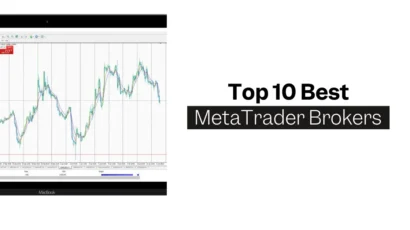Disclosure: Privacy Australia is community-supported. We may earn a commission when you buy a VPN through one of our links. Learn more.
Lettuce for $8 — Australian Inflation Hurts Restaurants and Shoppers
In Sydney, its food mecca, Chinatown, is reporting menu prices at between 20% and 30% higher than the beginning of the pandemic.
- Food costs are growing at some of the fastest rates seen for consumer goods in Australia. This includes the cost of vegetables and fruit rising by 18.6% in August relative to one year previous. This is according to figures from the Australian Bureau of Statistics.
- As with many other countries, Australia is facing record-high inflation. Yearly inflation in August grew to 6.8% from 2% pre-pandemic.
- On Eastern costs, floods have pushed prices further higher increasing the cost of a head of lettuce to as much as A$12.
One owner of a Taiwanese restaurant, Alan Chu, said prices for lettuce and the majority of veggies, including food ingredients in Australia have pushed prices up in his restaurant — which is popular for affordable meals at about A$30 per plate.
Allen says that the astonishing increase in the cost of vegetables, which can make even a small amount of cabbage or lettuce a high premium, is completely unprecedented. In his words, it’s “unheard of.”
Meanwhile, eastern floods in Australia, which are easing, occurring between March and July increased supply chain interruptions already exacerbated by the pandemic and intensified by energy issues, with floods annihilating crops and further promulgating record-high food prices in Australia.
For instance, the cost of lettuce spiked to A$12 in June, this is a quadruple increase from the normal cost which should be $2.90.
Although prices have dropped to the usual costs in bigger supermarkets, the price of lettuce has been astonishingly chaotic since the pandemic. Prices have risen to as much as 350%, before settling anything increasing again, according to data from Australia’s agricultural department.
What has the experience of Australian consumers been?
Soaring Food Costs
Australia’s food prices are soaring at an astonishing rate for consumer goods. The cost of everyday fruits and vegetables increased 18.6% in August relative to a year previous, according to recent figures from the Australian Bureau of Statistics.
The cost of non-alcoholic beverages and food as a whole rose to 9.3% in the year leading up to August, with costs growing throughout all three categories, figures from the bureau illustrated.
As with many nations, Australia is facing an astonishing cost of living crisis. The annual inflation for August rose to 6.8% — up from just 2% pre-pandemic. At that point, for deflation was around 1.3%.
One Sydney grocer, Chris Lam says that people are “hesitant” to spend the cash — everybody is intuitively tightening their belts and selectively purchasing things from stores.
Owners are being forced to reduce the portions on plates, or to increase prices. But they would prefer to do this slowly. Others are struggling most with raw ingredients and vegetable costs — particularly those imported, with supply chain issues causing knock-on effects on costs and availability. Prices were very high by the end of the lockdowns. The floods exacerbated this, making fresh food more expensive.
Changing spending habits
Chris, manager of a grocery store in Chinatown, agreed that prices were rising more sharply and this began soon after Easter. Ever since the pandemic, disruptions in supply chains began to stack. The increasing energy and fuel costs were responsible for this in many ways — with roots connected to the Ukrainian conflict.
For him, the biggest costs were cooking oil and rice, as these are imported goods. Many Australian consumers are now restricting how much they eat out.
Each day, they see shopping habits change.
Wage vs. Inflation Growth
One personal finance service that offers comparison guides, Finder, said it tracked the prices of consumer goods and saw increase prices were rising faster than wages were increasing — and this was happening across Australia from the beginning of the pandemic.
Not only were vegetables increasing in price, the cost of veal and beef also rose acutely by 33% with staple foods like cheese, milk, and eggs swelling in cost by 12%, according to its Consumer Sentiment Tracker.
Petrol saw an increase in costs of 30% compared to 2018.
Every business has experienced the impact. It could be a pot of tea being ordered in Sydney rising to A$6.70 — according to one expert adviser at Finder, Sarah Megginson. Her view was that these figures instantiate the fact that the cost of living is substantially growing in Australia.
Sarah says that “household stress” regarding everyday groceries has also increased over the last year. The bigger stresses that Australian consumers are facing our mortgage repayments and paying the bills, as well as petrol, energy, groceries, and more according to the findings of its September Consumer Sentiment Tracker.
This tracker also claims that 56% of Australians surveyed have at least some stress regarding their financial circumstances, with nearly 20% having extreme levels of stress. But roughly 25% of Aussies are not at all stressed.
Australia’s government warned in July that inflation would rise acutely until it reached the target peak of 7.75% at the end of 2022.
The Economic Society of Australia surveyed economists in July, asking whether Australians can endure these challenges and if an inflation rate of 8% would be manageable. Most of those polled seemed to believe that Australians can withstand the higher end of the 2 to 3% target threshold, or just a bit more. So the Reserve Bank of Australia continues to intend to hit that target.
However, many restaurants will not be able to transfer the growing prices to customers and will have to just suck up fewer profits. There is also talk of reduced government spending as a way of limiting inflation.
Takeaway
This comes as Australia announces expanded sanctions on Russia after its proclaimed annexation of four Ukrainian regions into the Russian Empire.
These new sanctions were in response to the occupation of Luhansk, Donetsk, Kherson and Zaporizhzhia — which Australia has said violates the Genocide Convention. A recent article by Sky News Australia had, as its headline, “Australia’s energy crisis is ‘only going to get worse.’”
This was, in part, a quote of Sky News host Chris Kenny, who said it was going to get “much, much, worse.”
News from the head of Atalanta energy informed a Sydney energy conference at 2023 would see the spot market price tariffs rising by at least 35%. Australia has seen a mixture of high prices and low power in spite of large investments in renewable energy. Senator of Nationals, Matt Canavan, says both Europe and Australia face this double-edged problem.
Massive increases in wind and solar investment for Australia and Europe have seen “not enough power and higher prices” Matt Canavan says. So far, the underlying cause of this crisis remains unresolved, meaning that Australia faces a deep recession alongside Europe and the US, intensified because of rigid sanctions against the second-biggest energy provider in the world.





